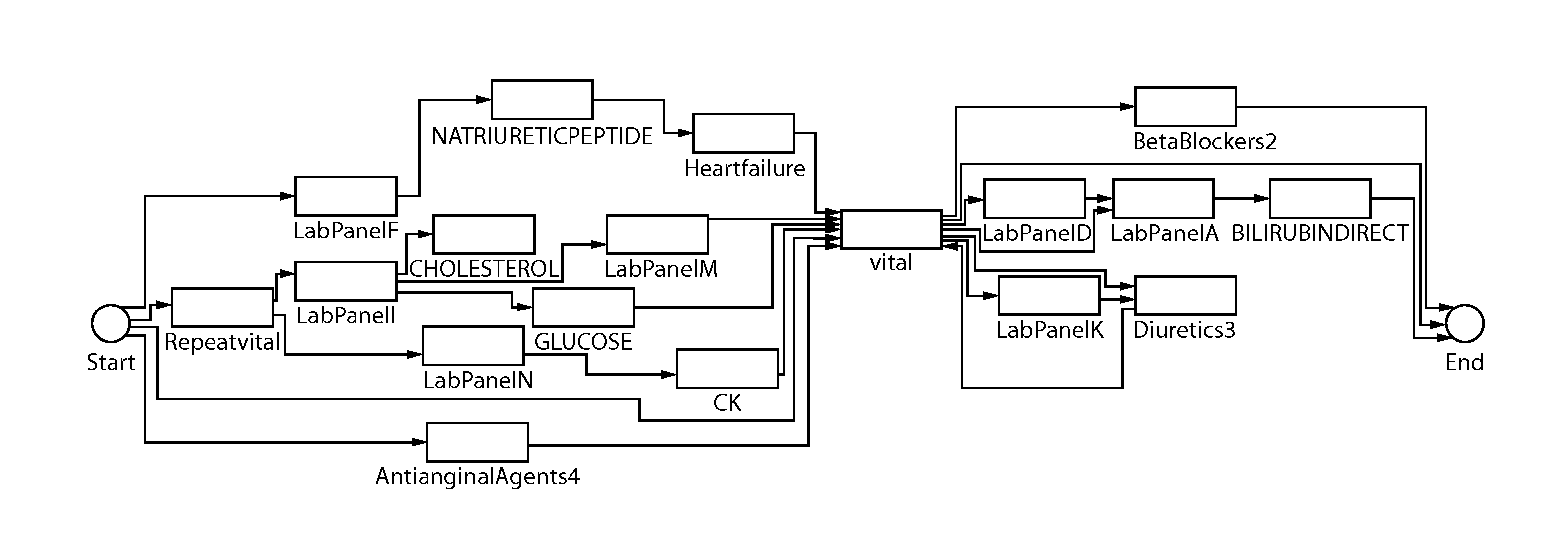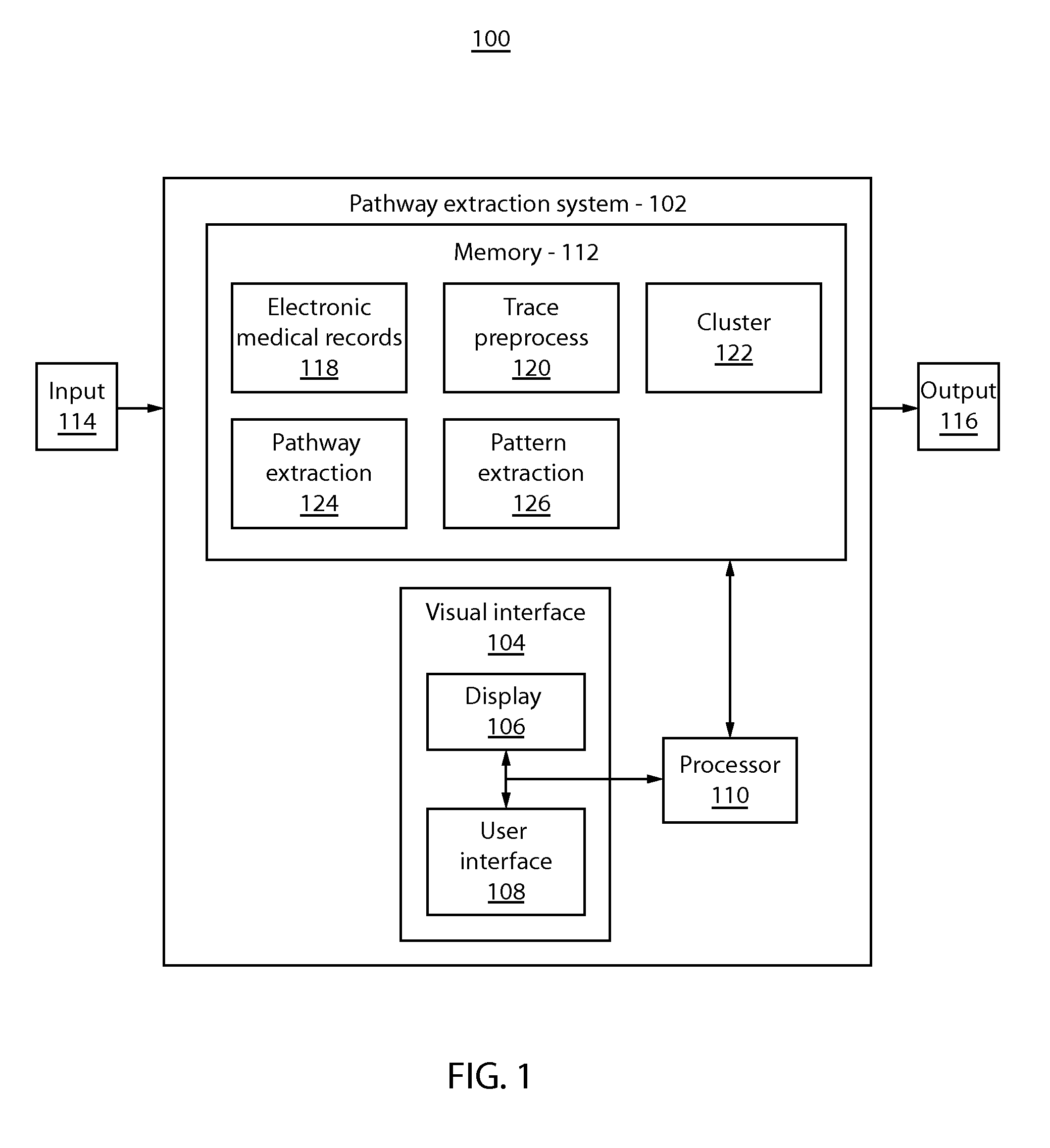Extracting clinical care pathways correlated with outcomes
a clinical care and outcome technology, applied in the field of patient data analysis, can solve problems such as pattern explosion, explosive diversity of events, and potential problems of raw patient event data in real world, and achieve the effects of reducing the risk of bias, reducing and improving the accuracy of clinical car
- Summary
- Abstract
- Description
- Claims
- Application Information
AI Technical Summary
Benefits of technology
Problems solved by technology
Method used
Image
Examples
Embodiment Construction
[0014]In accordance with the present principles, systems and methods for extracting clinical care pathways correlated with outcomes are provided. Patient traces are constructed as sets of medical events for each patient. The patient traces are preprocessed to reduce events in the patient traces and thereby reduce complexity. Preprocessed patient traces are then clustered and a cluster is identified, such as, e.g., the largest cluster, to remove patient outliers. Process mining is performed to mine a process model representing aggregated clinical treatment pathways from the patient traces of the cluster. Discriminative patterns are mined, e.g., from the preprocessed patient traces to identify patterns that are discriminative of patient outcomes. The discriminative patterns are overlaid on the process model to identify clinical pathways that are correlated with a particular patient outcome.
[0015]The present principles provide a visual overlay of discriminative patterns with respect to...
PUM
 Login to View More
Login to View More Abstract
Description
Claims
Application Information
 Login to View More
Login to View More - R&D
- Intellectual Property
- Life Sciences
- Materials
- Tech Scout
- Unparalleled Data Quality
- Higher Quality Content
- 60% Fewer Hallucinations
Browse by: Latest US Patents, China's latest patents, Technical Efficacy Thesaurus, Application Domain, Technology Topic, Popular Technical Reports.
© 2025 PatSnap. All rights reserved.Legal|Privacy policy|Modern Slavery Act Transparency Statement|Sitemap|About US| Contact US: help@patsnap.com



